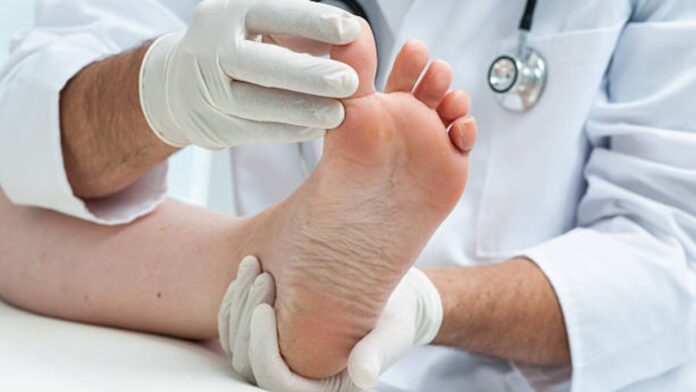Athlete’s foot, also known as tinea pedis, is a common fungal infection that primarily affects the skin of the feet. It is caused by various types of fungi, including Trichophyton and Epidermophyton. One specific cause of this infection is prolonged exposure to moisture, such as wet feet. In this article, we will explore the symptoms, causes, and treatment options for athlete’s foot, with a focus on the impact of wet feet.
Symptoms of Athlete’s Foot
Athlete’s foot typically manifests with several distinctive symptoms. The most common signs include itching, redness, and a burning sensation between the toes or on the soles of the feet. As the infection progresses, the skin may become dry, flaky, and cracked. In severe cases, blisters and ulcers may develop, leading to pain and discomfort.
Impact of Wet Feet
Wet feet create an environment conducive to the growth and spread of fungi that cause athlete’s foot. Prolonged moisture weakens the skin’s natural barrier, making it more susceptible to fungal infections. Activities that increase the risk of wet feet include walking barefoot in public places like swimming pools, gyms, or communal showers, as well as wearing tight-fitting shoes or socks that do not allow for proper ventilation.
Moisture can accumulate on the feet due to factors like excessive sweating, humid weather, or inadequate drying after bathing. People who engage in athletic activities, especially those involving intense physical exertion, are also more prone to developing athlete’s foot due to increased foot perspiration.
Treatment of Athlete’s Foot
Treating athlete’s foot involves both addressing the infection and preventing its recurrence. Over-the-counter antifungal creams, lotions, or powders containing active ingredients such as clotrimazole, terbinafine, or miconazole can effectively combat the fungal growth. These medications are typically applied to the affected area for a recommended duration, even after the symptoms have subsided, to ensure complete eradication.
Alongside topical treatments, maintaining proper foot hygiene is essential. Feet should be washed daily with soap and warm water, ensuring thorough drying, especially between the toes. It is advisable to use a separate towel for the feet to prevent the spread of infection. Wearing breathable footwear made of natural materials and changing socks frequently can help keep the feet dry.
For severe or persistent cases, a healthcare professional may prescribe stronger antifungal medications or oral medication to eliminate the infection. In addition, they may suggest soaking the feet in a diluted vinegar solution or using antifungal foot sprays to further aid in the healing process.
Prevention is key in avoiding athlete’s foot infections. This includes keeping the feet clean and dry, wearing moisture-wicking socks, and avoiding walking barefoot in public areas. It is also important to rotate shoes to allow them to dry fully between uses and to wear open-toed shoes whenever possible to promote airflow.
Conclusion
Athlete’s foot, a fungal infection commonly affecting the feet, can be aggravated by prolonged exposure to moisture, such as wet feet. Recognizing the symptoms and understanding the role of wet environments is crucial in managing and preventing this condition. By practicing good foot hygiene, using appropriate antifungal treatments, and taking preventive measures, individuals can effectively treat athlete’s foot and minimize the risk of recurrence.









